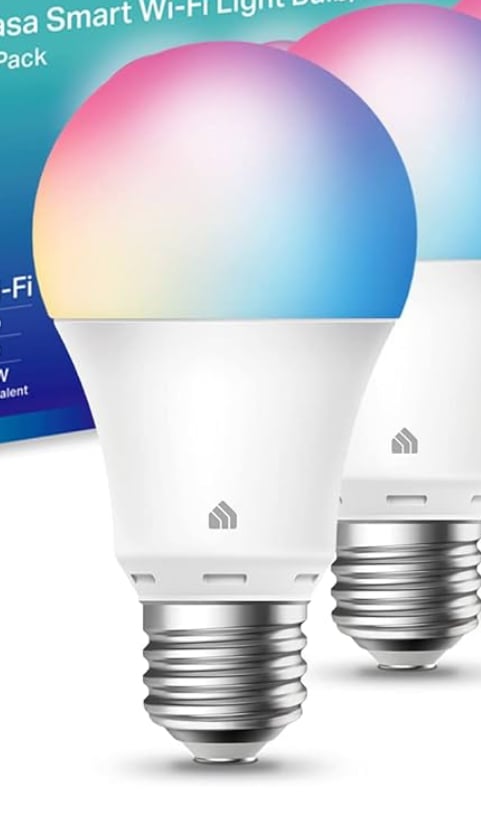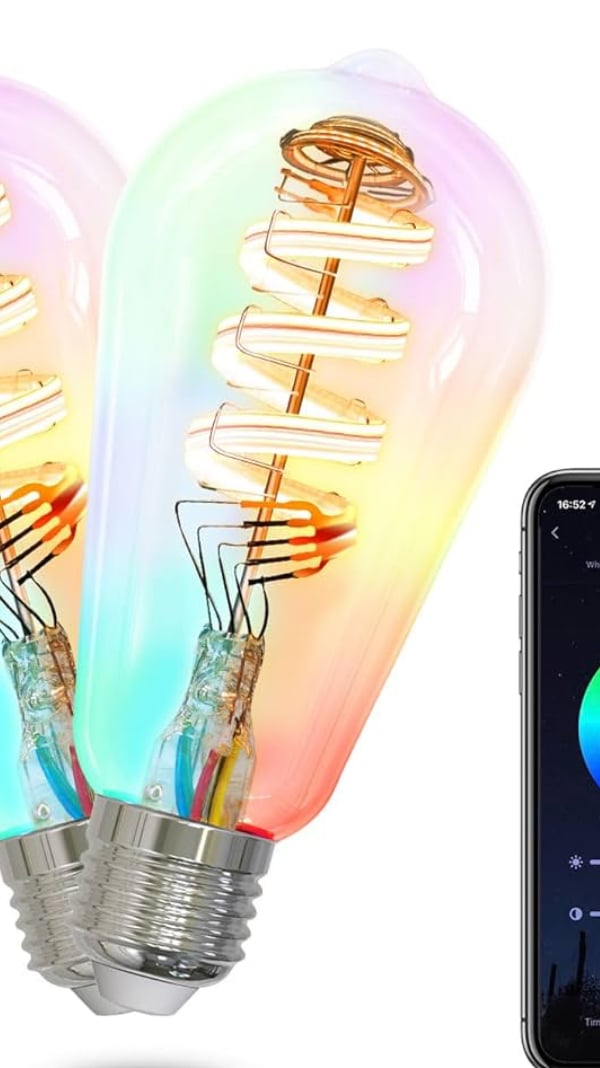How come LED Light Bulbs only last for about 2-3 Years?
I’ve bought and replaced a lot of light bulbs, and I noticed that all of them said “up to 20,000 hours” which would be about 5 years given 12 hours of daily use (which we definitely don’t).
I have a dozen that run 12+ hours a day. I’ve had 1 fail in 5 years.
Don’t buy cheap LEDs, and don’t put them in enclosures that trap heat.
Speaking from experience: LED drivers hate dirty power. If they burn out frequently, check the wiring for damage. I probably avoided a house fire.
As an EE graduate I want to hear more about what dirt means and what driver can be affected by it. I’d expect power electronics to stand 100% over voltage over short periods and easy 20% long term, which would blow up lots of other things on the house before the driver or the LED starts performing worse.
That’s a good point. LEDs dislike unstable power a LOT more than incandescent or fluorescent.
Since people are just giving snarky douchebag replies, I’ll actually attempt to answer the question since that’s what this community is for?
The estimate given on the packages of these bulbs are absolute best case scenario, using an optimal temperature range and pattern of use that won’t really match up with the average household because:
-
You may go on vacation and let your house get cold or hot. This could affect the life of thr bulb
-
The manufacturer is likely leaving the bulbs on 24/7 when measuring. Most people turn lights on and off multiple times throughout the day. This can decrease the life of thr bulb, just like with any other electronic device.
-
Humidity in the house can change dramatically year round. Manufacturing tests probably keep a constant humidity level.
-
If you’re buying cheap random LED bulbs off Amazon from dogshit brands (i do thid too so not knocking you), the manufacturer estimates might just straight up be a lie.
I’m sure there are other reasons but that’s a good start.
LEDs can take quite a beating. The only thing that degrades then is being on, and being hot. For all purposes unless it’s inside a restaurant kitchen or they’re on, they’re not hot.
Other packaged electronic components follow the same rules. Except wires and solder that can oxidize without being used.
So no, I think that’s a grift if you can’t reach 5 years. When domestic LED lighting was in infancy we’d hear all power LEDs, like for cars, should last 10 years.
It wouldn’t degrade from being shut off and on a bunch of times? I know like HDDs can degrade faster if they’re constantly powered off and on.
Appreciate the feedback. I just tried to answer the question the best I could since at the time most of the replies were unhelpful and rude
Mechanical things suffer a lot of stress from turning on/off. But even spinning disk storage turns off automatically if desktop is idle for a certain time, it’s a balance between switch vs continuous operation, they have overlapping kinds of wear and tear.
Top of mind, you can expect 10k cycles from typical buttons and it’s hard to be less complex than a button. Because metal parts are subject to fatigue.
Flash based drives would certainly fail faster or slower depending on the number of write bytes over its life.
Then there’s erosion caused by electrons, which is my biggest suspect for the problems of last generation of Intel CPUs. You have to royally screw up to start selling something that overlooked this.
Yea I don’t think I’ll buy Intel again. My next CPU upgrade will likely be an AMD ryzen chip.
Wait until you hear AMD is treating OEMs now as bad as Intel did on their most glorious moments.
I’ll try to buy as few computers as I can until Risc-v is main stream.
-
They don’t? What are you talking about?
Cheap ones do.
I have never had that happen and I buy my bulbs from the grocery store
I’ve had brand new ones that were duds before.
US?
I have still to have a led light break. They just never do, I buy mine at aliexpress or IKEA or wherever.
They never last that long, as they easily get away with it.
In one of the gulf states, though (Dubai?), they actually have only longer lasting LED lights for sale, as the minister responsible for regulation is something like an EE and forced the LED bulb providers to make a special version of those bulbs that basically last for ever. Those are only sold in that country, and hard to come by elsewhere.
Heat.
While the actual LEDs (*) may be rated up to 20,000 hours+ in optimum circumstances, but the actual 3rd party bulb manufacturers, especially the cheapo brands, are building bulbs with poor heat dissipation designs and cheap and/or poorly designed circuits. Same goes for other parts they may use, such as the power supply. To reach 20,000+ hours, you need everything - not just the LED - to be working optimally together.
(*) the best LED makers out there right now, e.g. Nichia, Cree, Phillips - really do some amazing engineering.
I was going to being up Nichia and Cree! (I’m a flashlight junkie, can’t help it.) There’s a world of difference in quality LEDs vs. cheap units.
I have 3x CREE floodlight-style bulbs on my terrarium, never lost one. The CRI (color rendering index) is 90+ (94?) and the colors are natural. If you contrast those with a regular LED, the results are gross.
Stop buying the cheap ones. :-)
Smart bulbs like this:

Have PCBs with small LEDs surface mounted to them. This means that the on-off cycle of the bulb causes heat deformation cycles of the PCB. This stresses the foils in the PCB and can eventually cause them to lose connection. That’s one of the reasons why they’ll often start flickering or lose the ability to be cool white, warm white, or specific colors (the different kinds of LEDs in them).
But bulbs like this (often called smart edison bulbs):

Use longer/larger LEDs that aren’t mounted to the PCBs, and will probably last much longer. They are better at not overheating their own electronics.
If you want the first kind to last longer, don’t run them above ~60% brightness.
Are you sure? Doesn’t the “smart edison bulb” design make it harder to dissipate heat to the casing, therefore making the LEDs get hotter compared to PCBs with LEDs surface mounted on them?
Anyway, if you want your
light bulbsany technology to last long, don’t buy the “smart” variant. “Smart” usually means more components and/or more dependencies on interfaces, and more complexity, so a higher chance to fail.Technology Connections seems to think they’re better and last longer, and I trust him implicitly.
I replaced my mom’s can lights with LEDs and I was an early adopter. I believe it was ~2012-15 ish. Not a single one has died. The only reason any of them fail now is poor quality and / or planned obsolescence. The tech itself is solid AF. I had some bulbs I got from IKEA for $1. Those have failed countless times.
Maybe stop buying the seizure-brand ones from Amazon?
I think I’ve had to replace one bulb in my entire house in the last 6 years or so.
Get the ones with the strip LEDs that look like they’re trying to emulate a glowing tungsten filament. I can’t remember where I got the information; it was like the Technology Connections YouTube channel or something, but I remember them saying that since they put the LED lights in series on those bulbs, they have a much higher voltage requirement to drive them, and much less circuitry is needed. It’s the circuitry that burns out, and many of these filament-style LED lights literally only have a resistor as their main component.
I’ve swapped to these kinds of LEDs like…5 years ago, and haven’t had one burn out yet. Probably have like…15 of them across the entire house.
https://youtu.be/fsIFxyOLJXM?si=4wz0wa355Wd9gkUP&t=1389 – YEP – Found the advice. Starts at 23:09 BigCliveDotCom also says the same in his episode about Dubai Lamps: https://www.youtube.com/watch?v=klaJqofCsu4
Almost every bulb in my house is the filament style and it’s always surprising when one dies. The 4 in my porch lights are on 24/7, in all weather of course, and have been for 4 years.
It’s the circuitry that burns out, and many of these filament-style LED lights literally only have a resistor as their main component.
Not true. I’ve been dumpster-diving for LED bulbs for 5 years and in the majority of cases, it’s one LED in a series chain that burns out (fails open circuit). As for the circuitry, the most common failure point is the inductor between the capacitors smoothing out the rectified mains voltage.
Mains filament bulbs with nothing but a resistor exist but they flicker between 0 and 100% at 100 or 120 Hz, which is not very pleasant. Good filament ones have circuitry very similar to the plastic ones. The reason filament bulbs last longer is better heat dissipation from the LEDs, and the circuitry does not get too hot either.
Only buy Philips (not the Hue stuff) or Osram
The rest are shite
+1 for philips.
The problem is most of what the big box hardware stores in the US are selling are junk brands. And they won’t even offer basics like a philips 75-watt-equivalent soft-white led in their stores.
The junk brand bulbs will fail in my kitchen light fixture after a year (they start flickering). The philips bulbs have never failed for me.
A properly designed and produced led bulb should last like 20 years.
Osram literally means “I’ll shit on it” in polish, they are the definition of a shit brand
Millions of electricians would disagree, but I can’t speak for Polish sparkies
It’s a joke in Poland - what shines and actively threatens you? A lightbulb made by Osram
Ha ha brilliant, I’ll remember that one 😊
Ikea’s are nice too
I’ve got several full color Hue bulbs that are the most used lights in my house. I haven’t had a single failure in a decade.
I was more than a little annoyed when they decided to stop supporting my original controller for them though.
Planned obsolescence
Mine work for I think over 10 years now. Some of the actual LEDs inside died but you don’t really notice 1-2 of 200 inside the bulb being dark.
I have been dumpster-diving for LED bulbs for 5 years. None of them had 200 chips, they usually have about 5-30 packages with 1-6 diodes each for a total of around 30-60 so that they total some 90-180 V in series (I live in a 230V mains region, and the 330V rectified mains can be efficiently transformed to that voltage by an SMPS). Because they are in series, if one in the series chain fails open circuit (the most common way), the entire chain goes out. Yes, fixtures (not bulbs) with 100+ LED chips exist and if they are designed to operate at a low voltage with all chips in parallel, the failure of one will not affect the others.
This sounds like an interesting hobby? Care to share more about how/why you are into dumpster diving for lightbulbs?
I saw Big Clive and DiodeGoneWild take some apart, and we had been using halogen or fluorescent ones at home because LED bulbs were over $10 back then. I thought I would learn something about electronics but not really, the failure modes are always the same: about 50% of the time, an LED burns out. 25% of the time, it’s the smoothing inductor gone open circuit. 10% of the time, a bad contact somewhere (usually solder joints on linearly-regulated ones). 5 % work out of the box for some reason. I remain adamant about not paying for LEDs even though dumpster diving is objectively not worth the trouble anymore.

i have 7 bulbs since 2019
none of them failed so far.all the lifespans i found ranged between 15.000 to 25.000 hours ( which btw was equated to 1.000 hours per year instead of 5.000 per year)
so this doesn’t sound normal to me.
how manny(in use) bulbs do you have?
what brands do you use?I’ve had sets of LED under-cabinet lights powered on 24/7 for about 14 years. I think one bulb went bad, out of 12.
They are probably very low-power and don’t get hot, which would kill them faster.


